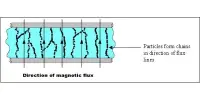You would not think of a wedding (or a birthday, or any other type of event) as a logical setting for a physics experiment, but they have a lot more in common with rocket science than you might expect. According to a new research approved for publication in the American Institute of Physics journal Physics of Fluids last month, this is the case. Researchers have discovered a spectacular sequence of supersonic shock waves emerging, growing, and dissipating at supersonic speeds within the first millisecond after a champagne bottle is opened, using Computational Fluid Dynamics (CFD) models.
The authors explain, “Behind the classic ‘pop!’ associated with the uncorking of a champagne bottle lies a gas flow of unexpected complexity.” “Its modeling is complicated by its supersonic nature, interaction with the cork stopper, the highly unstable nature of the flow emerging from the bottle, and the continual change in the geometry of the computational flow domain owing to the cork displacement.” So, when we pop that cork, what actually happens? Pulling out the stopper and targeting the bubbles away from people’s faces seems straightforward to us with our surprisingly low FPS eyesight, but under super-high-speed photography, we start to observe much more explosive detail.
The cork initially prevents the gas mixture within the bottle from escaping, but when we pull it free, a crown-shaped shock wave of gas blasts out around the stopper at about 1,500 kilometers per hour — nearly twice the speed of sound. The waves combine to produce shock diamonds, a phenomena more commonly observed in the exhaust plumes of rocket launches but with a fittingly rich name in this case, considering their origins. An entirely new sort of shock wave forms around two-thirds of a millisecond later.
The cork has gone far enough out of the bottle at this stage to allow for a cylindrical rather than radial gas flow, but not far enough to really get out of the way of the gas. And when this happens, we get a detached shock wave, also known as bow shock, which is more commonly connected with bullets and cosmic occurrences than with celebration cocktails. “Every time a bottle of champagne is uncorked, our study reveals the surprising and magnificent flow patterns that are buried right under our nose,” stated co-author Gérard Liger-Belair. “Who could have envisioned the intricate and artistic phenomena hiding underneath such a banal occurrence that any of us may have experienced?”
Liger-Blair and his colleagues previously demonstrated supersonic CO2 freezing jets being blasted from the bottle, causing dry ice to develop and light to be dispersed in the sky. It’s unlikely to be the last, since the team intends to investigate the effects of factors like as temperature and bottle size on the uncorking process. And, contrary to popular belief, this science isn’t only for a fancy drink — it has real-world implications in fields as diverse as ballistics, electronics manufacturing, wind turbines, and even underwater exploration.
“We sought to better define the surprising phenomena of a supersonic flow that occurs during champagne bottle uncorking,” stated Robert Georges, co-author of the study. “We hope that our simulations will provide researchers with some fascinating insights, and that they will think of a regular bottle of champagne as a mini-laboratory.”
















